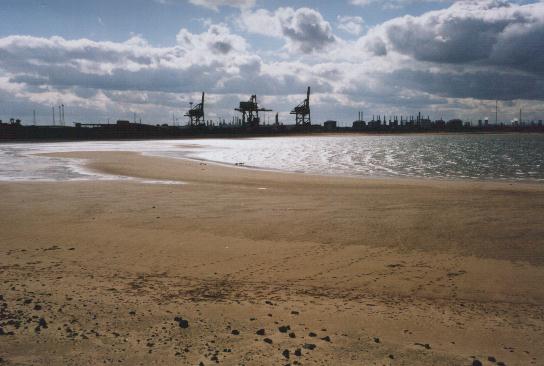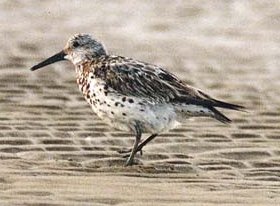Bran sands, Teesmouth

Bran sands is a surviving part of what was once a much more extensive part of the Tees estuary. Today it provides a feeding and roosting site for many species. This is a very good place to see a selection of waders that visit the UK. There is always the chance of finding something unusual. The best time to visit is when the tide is rising or falling. The seasons are also important as the sands are used as a feeding stop-over by waders during their very long migrations, autumn, winter and spring are the best periods. Regulars include Sanderling, Redshank, Knot, Dunlin, Ringed Plover, Bar-Tailed Godwit, Curlew, Oystercatcher, Grey Plover, Lapwing, Golden Plover, Greenshank, Ruff, and Turnstone. More unusual birds seen on here include, Little Stint, Baird's Sandpiper, Curlew Sandpiper, Common Sandpiper, Spotted Redshank, Black-Tailed Godwit, Whimbrel Great Knot and most recently a Short Billed Dowitcher.
It is also a good place to look for terns in late summer. You can find flocks of Arctic, Sandwich, Common, Little and if you are very lucky the odd Roseate Tern roosting on the sand. They are often accompanied by Skuas in late summer. Other rarities seen here have included Sabine's Gull, Long-Tailed Skua, Lesser Crested Tern and Great Knot (briefly). It is worth keeping a eye on this area as it has the potential to turn up almost anything.

Great Knot Calidris tenuirostris Photo Jimmy Pattinson